The "Round Year Fun" family of malicious Twitter apps ("My Twitter Family", "My Twitter Crush", etc) began using a new domain name (roundyearfun(dot)me) as of May 1st, 2021. Here's a look at the activity since the switch, and once again: DO NOT USE THESE APPS!
cc: @ZellaQuixote
cc: @ZellaQuixote
https://twitter.com/conspirator0/status/1383216080663945219
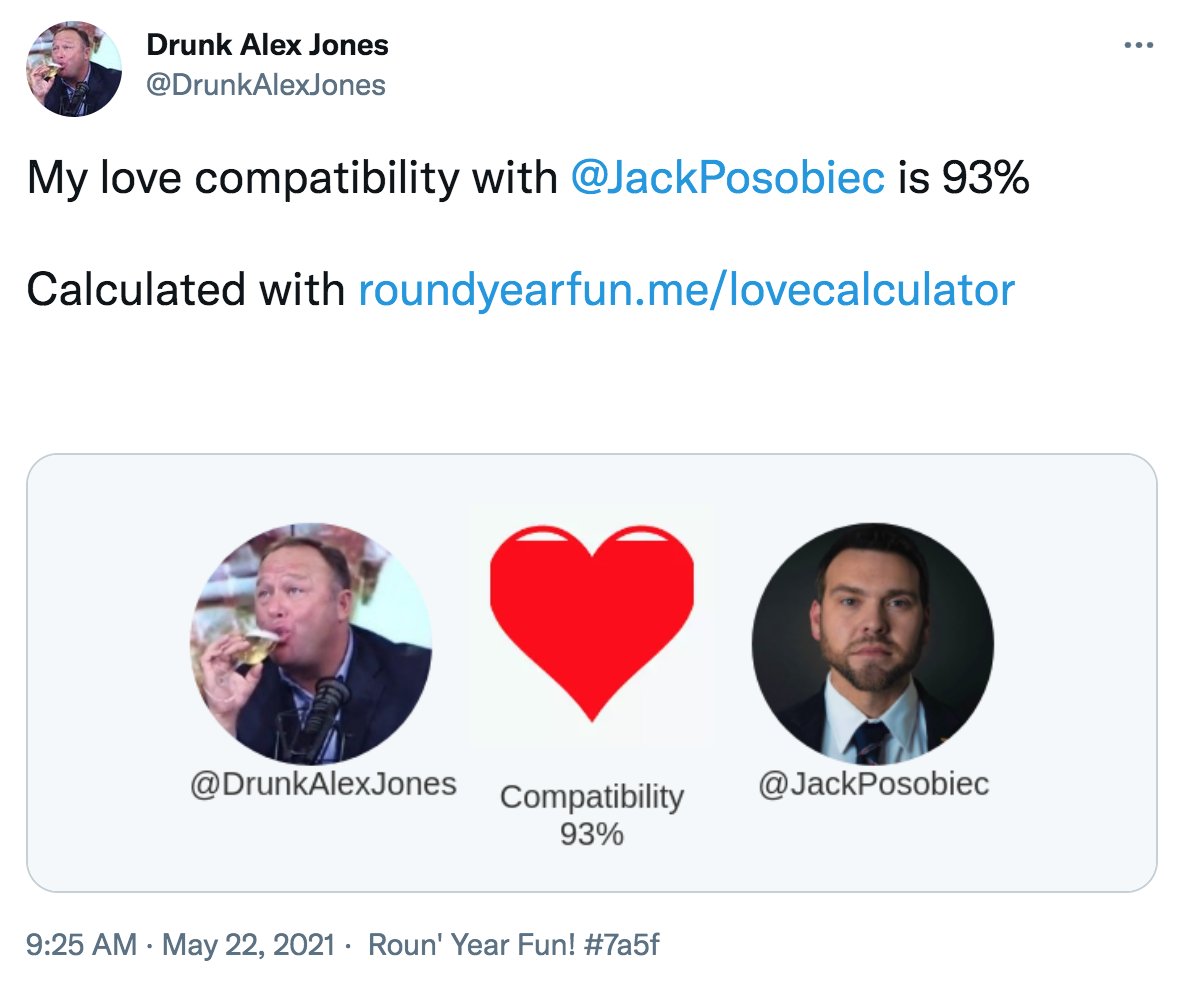
Using any of the Round Year Fun apps will cause your account to follow and mute a specific set of accounts without your knowledge. If you've already attached one or more of these apps to your account, here are instructions on how to revoke access:


https://twitter.com/conspirator0/status/1383216598081622017

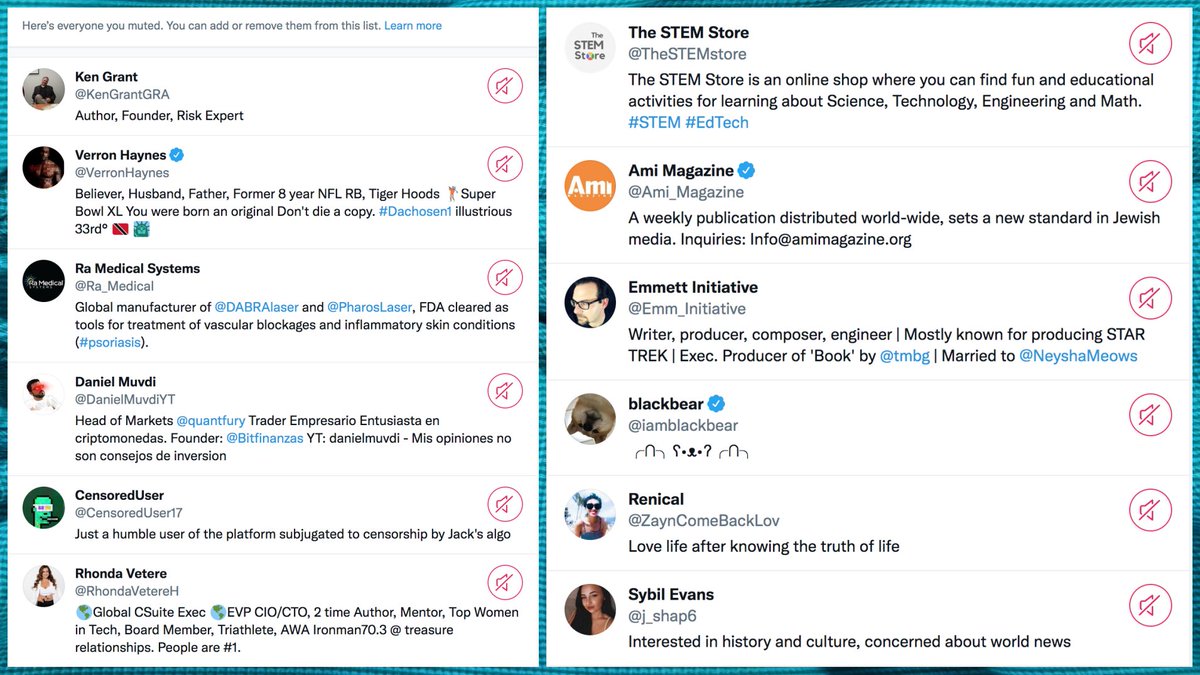
We downloaded all available tweets linking to the new Round Year Fun domain, roundyearfun(dot)me, yielding 145599 tweets from 117019 accounts posted via a whopping 870 distinct apps. 
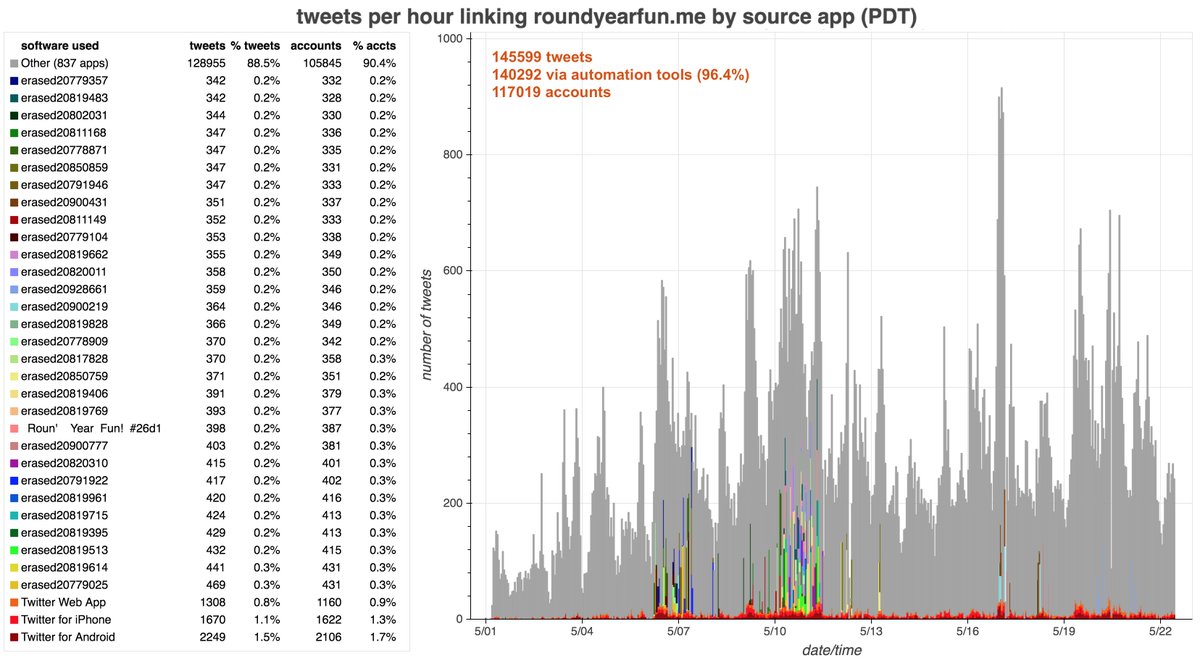
The majority of the apps used to post the Round Year Fun tweets are custom apps whose names are variations on "Round Year Fun" or "erasedXXXXXXXX". The "erasedXXXXXXXX" apps are apps that have been shut down by Twitter and were likely "Round Year Fun" variants originally. 

The tweets generated by the Round Year Fun apps tag other accounts (your alleged "Twitter family" etc), some of whom go on to try the malicious apps themselves. 67918 of the 117019 accounts (46.6%) with recent Round Year Fun tweets were previously tagged in Round Year Fun tweets. 
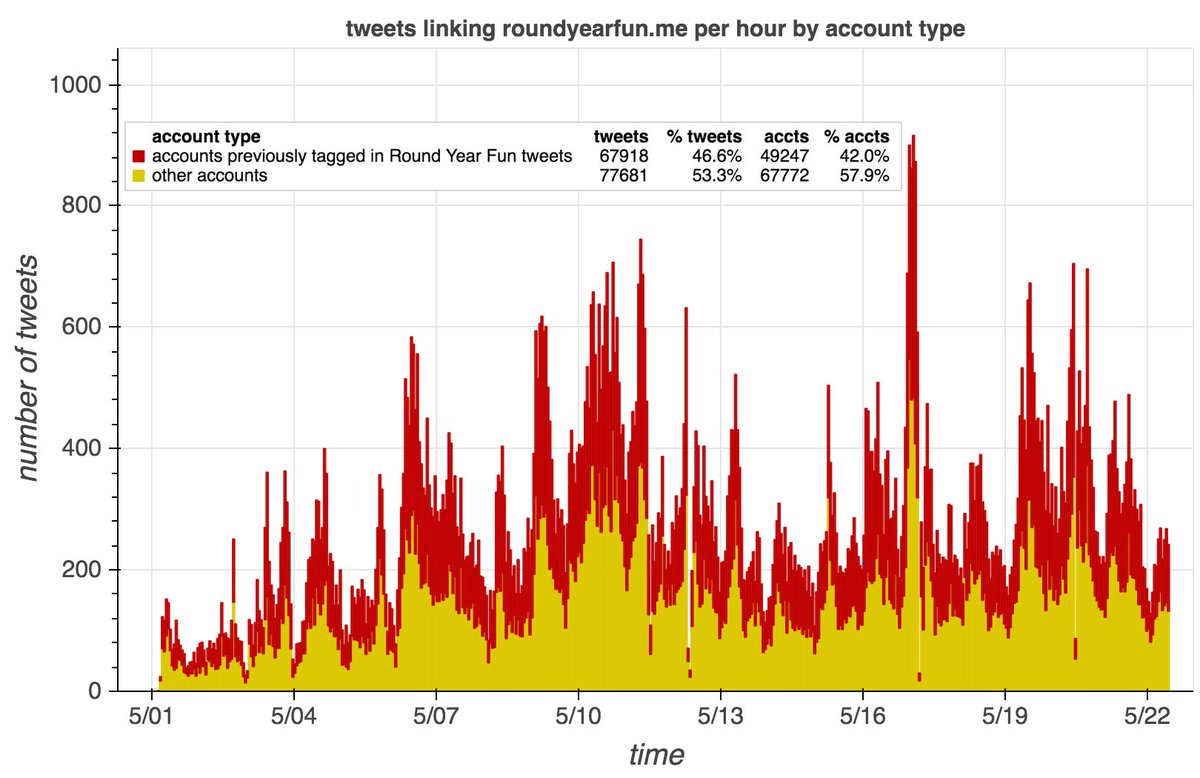
What accounts do the Round Year Fun apps currently force their users to unwittingly follow? Leading the pack is @MWCampanelli, with at least 16686 Round Year Fun followers since May 1st, 2021, followed by @RickcryptoRick, @j_shap6, and @CRYPTOFIED1. 
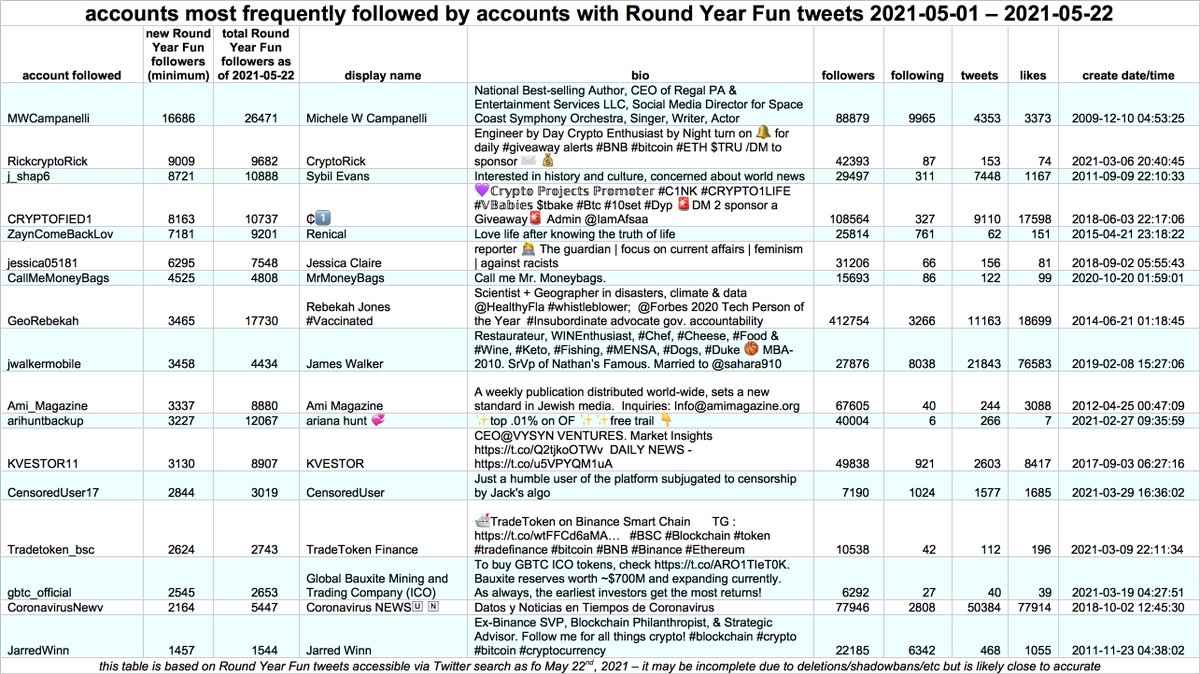
Here are follow order by creation date plots for the accounts that have recently received large infusions of (involuntary) followers via the Round Year Fun apps. The large red rectangular areas are the follower gains from the apps.
• • •
Missing some Tweet in this thread? You can try to
force a refresh































